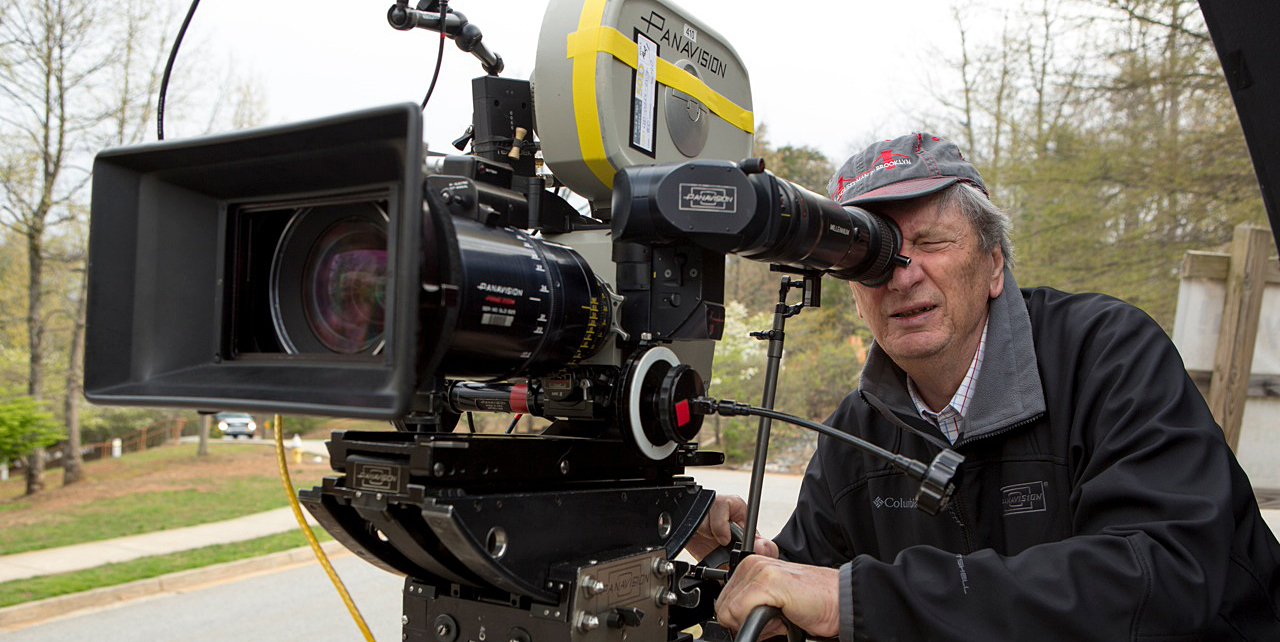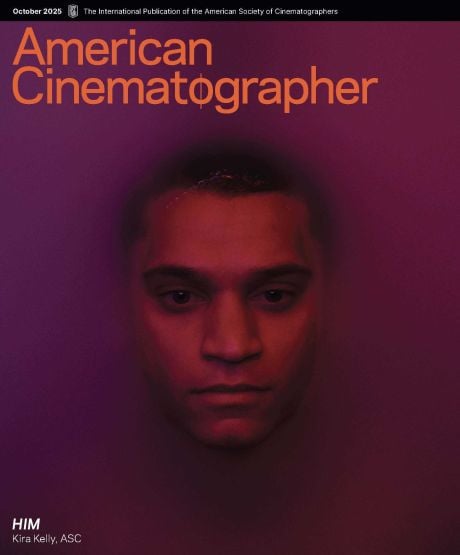
John Bailey, ASC: Image Creation and Other Issues
The cinematographer discusses the festival, making connection with the next generation of filmmakers, and what he believes is the essential essence of filmmaking: “Image creation.”
“Filmmaking is image creation. Yes, it’s got sound, it’s got production design, obviously acting, editing, all of these elements. But it’s about image creation.”
Award-winning cinematographer John Bailey, ASC — currently serving his second term as President of the Academy of Motion Picture Arts and Sciences — was one of the attendees at the recent Camerimage Film Festival. He met with American Cinematographer after hosting, with his wife, Carol Littleton, a seminar on “A Classical Analog Western,” which included a screening of his 1985 feature Silverado, directed by Lawrence Kasdan.
Here, Bailey discusses the festival, revisiting his film in 4K, making connection with the next generation of filmmakers, changes at the Academy, Netflix and the Oscars, and what he believes is the essential essence of filmmaking: “Image creation.”
American Cinematographer: You screened Silverado at the Morelia International Film Festival (FICM) in Mexico before bringing it here to Bydgoszcz.
John Bailey, ASC: I must say that festival and this one are the two signature ones for me for different reasons. Morelia is so embedded with honoring the whole spirit of Mexican and Latin American harmony. We were able to see a few of the films there in a retrospective of Alex Phillips, which were really interesting. And a couple of films Gabriel Figueroa had photographed.
Figueroa was Alex Phillips’ apprentice.
Gabriel Figueroa actually started as a still photographer, he had his own studio. There’s so little that’s known about the history of Mexican cinematography and production design and editing. I mean there’s a whole world there, with several golden ages. Of course we’re more aware of it now because of the "three amigos" [Alejandro Gonzalez Inarritu, Guillermo del Toro and Alfonso Cuarón], especially this year with Roma.
How many times have you attended Camerimage?
Five. Carol and I came to the second festival in 1994 in Toruń, when it was still in its infancy. It was a year when the lifetime achievement award was given to Witold Sobociński [PSC], he shared it with Vittorio Storaro [ASC, AIC]. So, this year, they honored Witold by himself. The two winning films that year were Polish: Woyzeck, shot by Tibor Mathe, and Crows, shot by Arthur Reinhart.
We came back a few years later when it was still in Toruń, and then for the next 15 years or so, I wasn’t able to come because it turned out every November I was involved with a picture. It’s not that I didn’t want to come, just that the schedule just never worked out. Last year and this year I had more control over my schedule. It’ll be the same next year I hope.
As a cinematographer, what does Camerimage mean to you?
Three of the five jurors this year for the Student Etudes competition were cinematographers, along with my wife, [award-winning feature editor] Carol, and a publicist from Rogers & Cowan. One thing that I found interesting was that it was essentially an affirmation of what I have always felt this festival was about. Which is not just honoring cinematography in the sense of let’s look at the best, most exciting, most well-crafted images. But in the context of what is the most appropriate cinematography for the film itself, in terms of how it serves the through line of the story, how it serves the actors, how it helps shape and contour the actors’ performances, how it either calls attention to itself — when it’s appropriate — or how it is totally subsumed into the film itself.
And so what I found was cinematographers who shoot features are essentially visual storytellers. One of the things the festival has always emphasized from the very beginning is that value and that perspective. That the best cinematography is not necessarily the cinematography that is the most technical or the most aesthetically self-conscious or accomplished, but that best serves the emotional experience of the film. Because that’s why we go to movies, right? We want to be moved. We want to be edified. We want to feel like we have had a window into understanding life.
Do you get the chance to interact with the attendees here at Camerimage?
Carol and I had an afternoon where we showed a 4K DI of Silverado. Grover Crisp at Sony sent it and it was absolutely beautiful. I’ve never seen the film look so good, even in 70mm. In some of the exterior landscapes I finally saw the Georgia O’Keefe colors that I’d always intended for the film.
We had a lot of young people there. Carol and I called the seminar "A Classical Analog Western” because we wanted to emphasize that Silverado was honoring the classical Western. We shot it not only in 35mm, but in what was then a new process called Super Techniscope, which later became Super 35. It was a three-perforation system that opened up the soundtrack area to picture. It’s one of the only Super Techniscope movies, aside from John Alcott [BSC]’s Tarzan movie, Greystoke.
I gave a capsule history of anamorphic lenses starting with the fact that the original anamorphic system was invented by a Frenchman, Henri Chrétien, in the 1920s and then Fox licensed it from him and called it CinemaScope. We had a great conversation, a Q&A talking about film formats. I kept thinking, well, too bad [ASC associate member] Rob Hummel isn’t here, you know, because Rob we call “Dr. Format.” If there’s anybody that knows the entire history of all film formats and how they evolved, it’s Rob.
So that was great, we could talk about historic technology with a bunch of young cinematographers who maybe have never actually even held film. We talked about what happened when sound came in, how you had to crop top and bottom and you’ve got the big matte lines for Academy aspect ratio, and then the challenge of television. I talked for about 15 minutes, and I kept thinking, oh my God, I am so deep in the weeds here, do they even give a damn?
But they did. And so you know that’s really gratifying that you can actually talk to young cinematographers in a context like this where you can have a certain level of confidence that what you’re saying matters.
So in the midst of all this technology and all these workshops about file formats and different lens systems and everything, you can also talk about film.
I’ll give you another example. We hosted an Academy member party, but we didn’t get the word out fully enough, so there were only a half-dozen or so people there with all this food. It was right after the Roma screening and discussion that Alfonso Cuarón hosted. We had Kazik [Suwała, Festival Office Director] go up to the screening room and invite the students there to join us.
So within like 30 seconds flat, we had something like 125 young people at the party. No one over the age of 35. I made an announcement and said, “I know in this room I’m talking to many future Academy members, so congratulations in advance."
That’s the kind of thing that happens in a festival like this because it’s not about the marketing of films, it’s not about the distribution of films. It’s about honoring cinematography.
Filmmaking is image creation. Yes, it’s got sound, it’s got production design, obviously acting, editing, all of these elements. But it’s about image creation. So here we’re dealing with the fundamental element of what a movie is. We have all these young people meeting veterans who are eager to share their experiences. It’s unlike anything else, it’s really about cinema and it’s pure in that way.
“We have 928 new members, and half of them are international. And that speaks to the whole notion of diversity and inclusion.”
Last year, diversity became a major issue at the festival. You’ve also dealt with diversity at the Academy.
We all feel very strongly about that, cinematography perhaps more than almost any other branch. It’s also an issue for visual effects, that’s been a disproportionately male province.
I am so pleased that there are more and more women cinematographers coming out of the film schools. [American Film Institute Conservatory Cinematography Discipline Head] Steve Lighthill [ASC] says that 50 percent of the cinematographers at the AFI are women. We are working very hard in the cinematographers branch. We’ve extended invitations to women cinematographers around the world. It’s more than important; it’s urgent.
Can you talk about how you’ve opened up the Academy?
We have 928 new members, and half of them are international. And that speaks to the whole notion of diversity and inclusion. We really needed to reach out more around the world. What’s been really great is the way Academy staff, the branches and subcommittees, have recruited so many people. Downstairs in the restaurant, [Polish writer-producer-director] Lech Majewski came up to me. I’m very proud I signed his new member certificate. I became a huge fan of this beautiful film he did a few years ago called The Mill and the Cross. It brings to life a Brueghel painting, “The Way to Calvary." Rutger Hauer and Charlotte Rampling are in it.
[Hungarian writer-producer-director] Béla Tarr was invited — talk about an icon. And the one I love to mention, [Italian writer-producer-director] Marco Bellocchio. You know, he made Fists in the Pocket in 1965, and we’re only now trying to bring him in.
Can you address the issues surrounding streaming? Roma is a good example.
You know the whole streaming thing is hard to talk about because it’s mercurial. I feel that it’s slippery, you can’t grab onto it and say this is what it is because it’s constantly changing. Six or eight months ago, there was no way Netflix was going to show films theatrically, and then Roma and The Ballad of Buster Scruggs come along.
“Categories come and go. You know there used to be two cinematography awards, a black-and-white award and one for color.”
Are these releases for Academy consideration?
Well there was a lot of discussion, Alfonso and I have talked about this a lot. You know I’ve never met [Netflix CEO] Reed Hastings, but from everything I’ve heard he is a hard-core streaming person. But I think the situation is evolving and they are starting to understand that theatrical releases are in fact in Netflix’s interest, certainly for some films. There is a benefit for everybody, including Netflix, to have the kind of presence and profile in theatrical exhibition that these films can have. I honestly think it’s so as I said mercurial that it’s hard to talk about even.
The Academy does have a committee, The Future of Film, looking at streaming. What we have found in all the meetings that we’ve had, all the different perspectives we’ve had, is there is a broad-based desire not just within the Academy but with people everywhere to continue to go to movies regularly. They want to. They don’t want to see theatrical, large-screen exhibition dry up. There’s a lot of momentum behind it.
None of these things are written in stone. Just like the Academy categories. I mean, we used to give honorary Oscars to children. The juvenile award went to Shirley Temple and Mickey Rooney, for example. For Snow White and the Seven Dwarfs, we gave Disney an Oscar surrounded by seven little Oscars.
Categories come and go. You know there used to be two cinematography awards, a black-and-white award and one for color. Color didn’t become a permanent category until 1939. The foreign-language film award was given out four or five times before it became an annual award in 1956. It used to be an honorary award. So these things change all the time.
Who knows the studio politics behind those early awards.
Well, studio politics was often a decisive factor in who garnered Academy Awards. There’s a rumor that [producer and studio head] Sam Goldwyn didn’t get a Best Picture Oscar until The Best Years of Our Lives [1946], when he couldn’t be denied anymore. Until then, he simply didn’t have the votes. Everybody talks today about the way the studios try to influence Academy voters. This was going on from the beginning.
“You always have anxiety about a film that mattered so much to you when you first saw it. You look at it 30 years later and say, ‘What the hell was I thinking?’”
Two pretty consistent complaints here from cinematographers are that their preproduction times are getting squeezed, and they’re being cut out of the digital intermediate [DI] process.
Yes, I’ve been hearing that. I think the real complaint among a lot of the younger cinematographers is that the producers or the studios or whoever are looking at them as people who cost them more money and slow down the process of finishing the film. You know I’m married to an editor, and I’ve heard frequent stories about essentially editors and the colorists deciding what a film is going to look like.
This is complicated by the fact that often you’re just not available when they’re finishing the film. This happened to me all during the analog era when I was sometimes shooting three films a year. Usually I could give notes over the phone because you didn’t have a 1,000 different things you could change. It was much simpler. But I think it is a real problem today. The fact of the matter is almost all films are shot on location now. And how many places in the country have the facilities for doing DIs? I don’t know what the solution is, if there is one.
The Academy has been involved in a number of restoration projects that never get enough attention.
The other day I was talking about the Academy Film Archive and its two most recent restorations. You talk about a range of material. One was the 11-day-schedule, Edgar Ulmer directed, z-budget movie Detour. A beautiful restoration from elements that were brought together from a thousand different places.
The other one we showed at the British Film Festival when I was there for the new members reception. The Unbearable Lightness of Being[1988; shot by Sven Nykvist, ASC]. It’s absolutely beautiful. [Writer-director] Phil Kaufman supervised it and he said it’s the most satisfying restoration of any of his films. You always have anxiety about a film that mattered so much to you when you first saw it. You look at it 30 years later and say, “What the hell was I thinking?” But this holds up, it really holds up.






